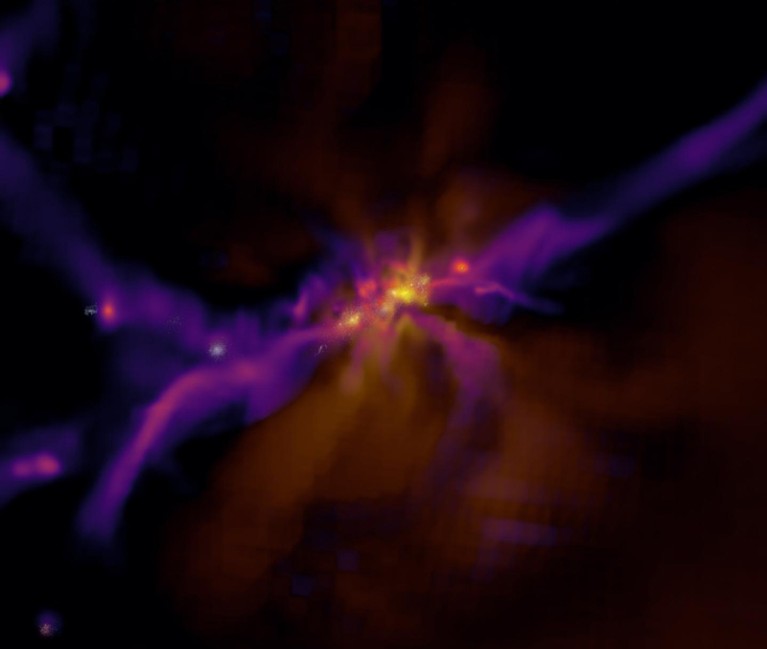- RESEARCH HIGHLIGHT
When was cosmic dawn? Some of the most distant galaxies known hold a clue

A snapshot of galaxies and stars evolving a few hundred million years after the Big Bang (image extracted from a simulation). Gas filaments are depicted in purple, starlight in white, and highly energetic radiation from the most massive stars in yellow. Credit: Harley Katz, Beecroft Fellow/Univ. Oxford
Access options
Access Nature and 54 other Nature Portfolio journals
Get Nature+, our best-value online-access subscription
$29.99 / 30 days
cancel any time
Subscribe to this journal
Receive 51 print issues and online access
$199.00 per year
only $3.90 per issue
Rent or buy this article
Prices vary by article type
from$1.95
to$39.95
Prices may be subject to local taxes which are calculated during checkout
Nature 595, 152 (2021)
doi: https://doi.org/10.1038/d41586-021-01766-6



